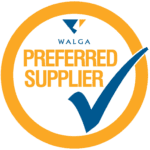Safety in mining is paramount, and clear communication plays a vital role in ensuring it. As one of the foundational elements of safety communication, mining signs play a pivotal role within the mines, alerting, instructing, and guiding miners at every turn.
Corsign, a leader in the field, elevates the effectiveness of these signs through quality craftsmanship and expert knowledge, ensuring that these crucial tools are perfectly suited to the mining environment. Dive into this article to understand how these signs contribute to mining safety and how Corsign is at the forefront of this essential endeavour.
The undeniable importance of mining signs
Mining, with its unique challenges and potentially hazardous environments, demands clear and consistent communication tools. In this context, mining signs serve as invaluable assets. They provide vital information, guide actions, and enhance overall safety within the complex environment of mining operations. Let’s delve deeper into their significance.
Highlighting hazards: The first line of defence
In the world of mining, dangers can lurk around every corner—from falling rocks to hazardous gases. Mining signs alert workers to such potential risks.
Visual prominence: Bright colours and distinct symbols grab attention immediately.
Strategic placement: Locations are chosen based on potential risk zones—near machinery, at tunnel entrances, or in areas with hazardous materials.
Continuous updates: As mines evolve and new hazards emerge, signs are updated or added to reflect the changing landscape.
Guiding movements: Creating a safe path
The mining environment is bustling with activity. From the movement of heavy vehicles to the flow of workers during shift changes, orchestrating these movements is crucial. Signs play a vital role here:
Traffic flow: Signs help in routing vehicles in the right direction, ensuring there’s no collision or blockage in tight spaces.
Pedestrian pathways: Separate paths for on-foot miners reduce the risk of accidents with machinery.
Zoning: Certain areas might be designated for specific activities; signs help delineate these zones, ensuring that operations don’t overlap hazardously.
Providing instructions: A manual for safe mining
While training is provided to every miner, reminders are always beneficial. Instructional mining signs serve this purpose:
Operational guidelines: How to operate machinery, the right way to lift heavy objects, or the protocol for ventilation can all be reinforced through signs.
Behavioural reminders: Simple acts like wearing a helmet, using safety goggles, or not using mobile phones in certain areas can be critical. Signs serve as a constant nudge towards these safe behaviours.
Quick references: For tasks that are not daily routines, signs can provide quick step-by-step guides, ensuring that procedures are followed correctly.
Facilitating emergency responses: Guiding lights in times of crisis
In the unfortunate event of emergencies such as fires, cave-ins, or gas leaks, every second counts. The difference between safety and tragedy can hinge on the clarity and visibility of an emergency sign.
Evacuation paths: Clearly marked and illuminated signs guide workers to the nearest exit, ensuring that in moments of panic, there’s a clear path to follow.
Muster points: Once out of immediate danger, workers need to gather at specific locations for headcounts. Signs help identify these muster zones.
Emergency equipment: In situations that require immediate first aid or firefighting, signs point to the location of equipment like fire extinguishers, first aid kits, and emergency showers.
A look at regulatory frameworks
Australia’s dedication to mining safety is not only evident in the practices and precautions adopted by its mining industry but is also deeply embedded within its legislative framework. Two such cornerstone legislations are the Mines Safety and Inspection Act 1994 and the Mines Safety and Inspection Regulations 1995. Both serve as bulwarks, ensuring that every mine, miner, and affiliated entity upholds the highest safety standards. Within these two legislative tools, the criteria for mining signs are detailed with precision.
Design standards: Crafting a universal language
The importance of a sign often lies in its instant recognisability. In a setting like a mine, where quick decisions might be the norm, having clear, unambiguous signs can be lifesaving.
Colour coding: Each colour is carefully selected based on its visibility and the psychological impact it carries. For instance, red often indicates immediate danger, while green is associated with safe exits or emergency equipment.
Symbols and pictograms: These are chosen based on their universal recognisability. By adhering to globally understood symbols, the regulations ensure that even workers from diverse linguistic backgrounds can understand the signs.
Sizing considerations: A sign’s size determines its readability from various distances. Regulations specify sizes based on the importance of the sign and the anticipated distance of the viewer.
Placement criteria: Strategic positioning for optimum impact
The best-designed sign would serve little purpose if not placed where it’s most needed. The regulations take this into account by providing specific criteria for the positioning of signs.
Height considerations: Signs need to be placed at eye level or in a position where they can be easily spotted even in crowded or busy areas.
Location relevance: Hazard warnings are positioned near the hazard source, traffic directions are placed at junctions, and emergency signs are located along escape routes and near safety equipment.
Illumination and visibility: In dimly lit mines, signs might need to be reflective or illuminated to ensure they’re visible at all times.
Maintenance obligations: Keeping the message clear
In the harsh environment of mines, wear and tear are natural. Yet, a faded or damaged sign can severely compromise safety. Recognising this, the regulations lay down clear mandates about sign maintenance.
Regular inspections: Mining operators are required to frequently inspect signs for damage, wear, and clarity.
Immediate replacements: Any sign that’s no longer legible, has lost its colour integrity, or has been damaged needs to be replaced promptly.
Material standards: Signs must endure various environmental challenges in mines, from moisture and dust to chemical exposure. Corsign’s signs are designed to meet these stringent requirements. Using advanced materials and manufacturing methods, Corsign ensures their signs remain clear and durable, even under extreme conditions. With their commitment to quality, Corsign provides mining operations with reliable safety signage that stands the test of time.
The language of mining signs
In the vast stretch of a mining operation, with its passageways, rumbling machinery, and continuous activity, clarity is paramount. The signs spread across a mine act as constant guides, speaking a language everyone understands.
Warning signs: The yellow heralds of caution
Yellow signs, with their striking black symbols or text, serve as the mining industry’s first alert system. While they don’t imply imminent danger, they emphasise the need for care.
Usage: Commonly seen near areas with moving machinery, overhead loads, or slippery surfaces.
Purpose: To remind workers to be vigilant and take necessary precautions, ensuring their safety and that of their peers.
Danger signs: The red flags of immediate threat
Red, a colour hard-wired into our brains to signal urgency, is the colour of choice for danger signs.
Usage: Around explosive storage areas, high-voltage zones, or places with dangerous chemicals.
Purpose: To halt, to alert, and to ensure that anyone in the vicinity knows the gravity of the situation and acts accordingly.
Emergency signs: The green guides in times of distress
Emergencies can bring chaos, but the reassuring green of emergency signs acts as a beacon, guiding everyone to safety.
Usage: Marking escape routes, exits, assembly points, and locations of essential emergency equipment like first aid kits.
Purpose: To provide clear, immediate direction during crises, reducing panic and ensuring order.
Prohibition signs: The red-ringed sentinels
These signs, easily identified by their distinctive red circle and diagonal line, dictate what not to do.
Usage: Areas where actions like smoking, use of mobile phones, or entry without permission are forbidden.
Purpose: To prevent activities that could compromise safety or hinder operations.
Mandatory signs: The blue mandates
Often blue with a white symbol, these signs don’t just suggest—they instruct.
Usage: Demarcating zones where safety gear like helmets, safety goggles, or high-visibility jackets are obligatory.
Purpose: To ensure compliance with essential safety protocols, reducing the risk of injuries.
Information signs: The white or blue informers
While not directly related to immediate safety concerns, these signs are vital for the smooth functioning of daily mining operations.
Usage: Indicating general directions, facility locations, or operational instructions.
Purpose: To facilitate easy navigation, efficient operations, and the dissemination of essential information.
Enhancing mine safety with Corsign
Corsign offers comprehensive services customised to the mining sector, ensuring worker safety through expert advice, quality manufacturing, and precise installation.
Advice and estimates
Corsign provides tailored expertise in mine safety signage, understanding the unique challenges of the mining environment. We guide you with precise advice and accurate estimates, ensuring optimal signage that meets both safety and regulatory requirements.
Smooth project management with Corsign
Navigating the complexities of mining projects requires precision and expertise. Corsign’s project management team excels in delivering signage solutions tailored to the mining sector, ensuring timely execution, compliance, and alignment with your mine’s safety objectives.
Manufacturing excellence
Based in Gnangara, Western Australia, Corsign specialises in crafting durable signage suitable for the rigorous conditions of WA mining sites. Our signs adhere to stringent Australian standards, ensuring they withstand the test of time and environment, offering optimal visibility and clarity in the mines.
Installation
Corsign offers seamless installation for mining sites, understanding the intricate requirements and protocols unique to the sector. Our professional team, equipped with specialised tools and machinery, ensures every sign is strategically positioned to enhance safety and awareness within the mining landscape.
In conclusion
Mining signs play a pivotal role in orchestrating a safe and efficient work environment. From warning miners about potential dangers to guiding them during emergencies, these signs are truly the unsung heroes of the mining sector.
With Corsign’s commitment to quality and precision, mining operations can ensure their signs are not just compliant with regulations but are also durable, clear, and effective. If your mining operation is looking to enhance its safety protocols with quality signage, Corsign is the partner you need. Reach out to Corsign today and take a definitive step towards a safer mine.




